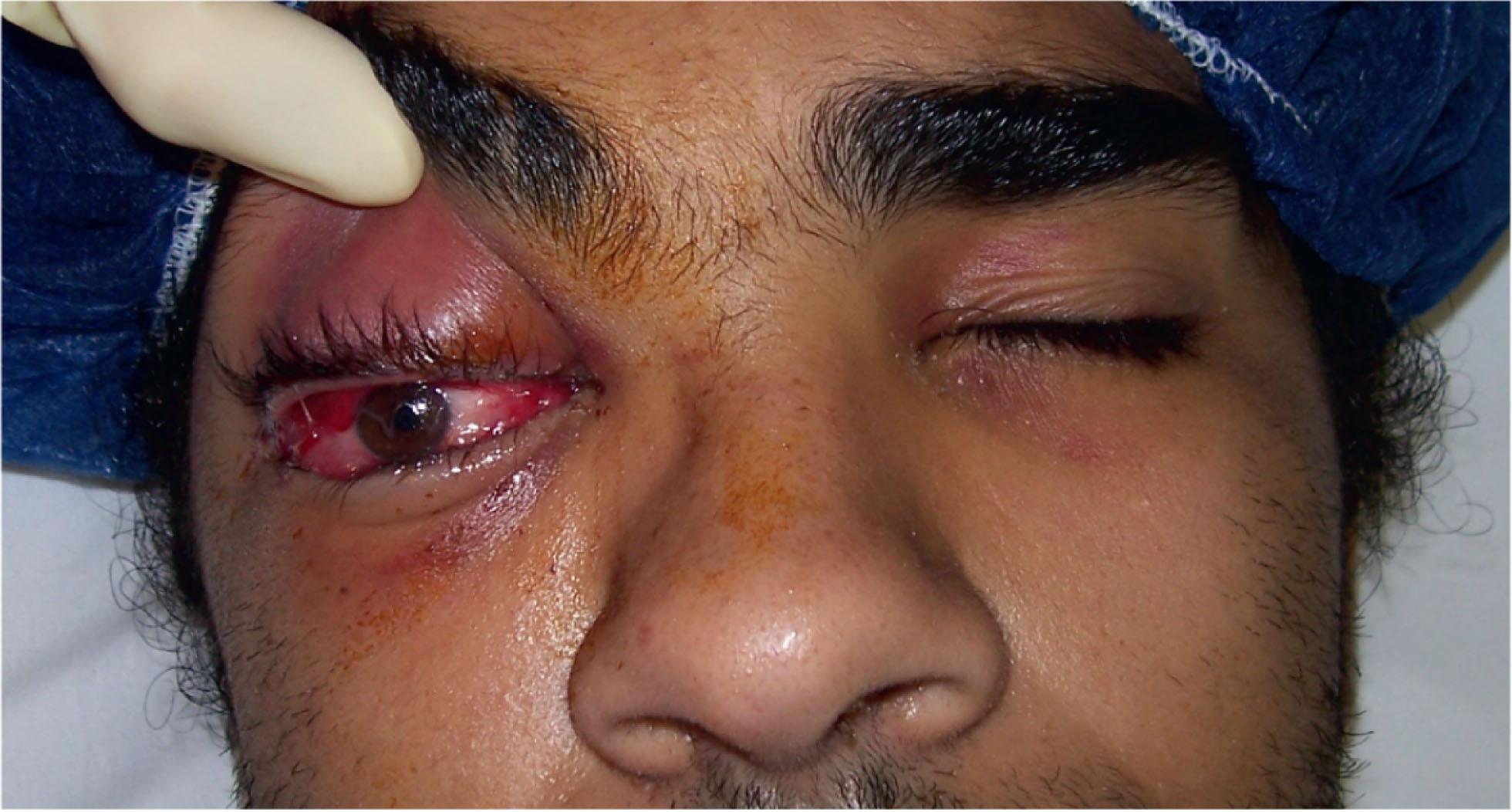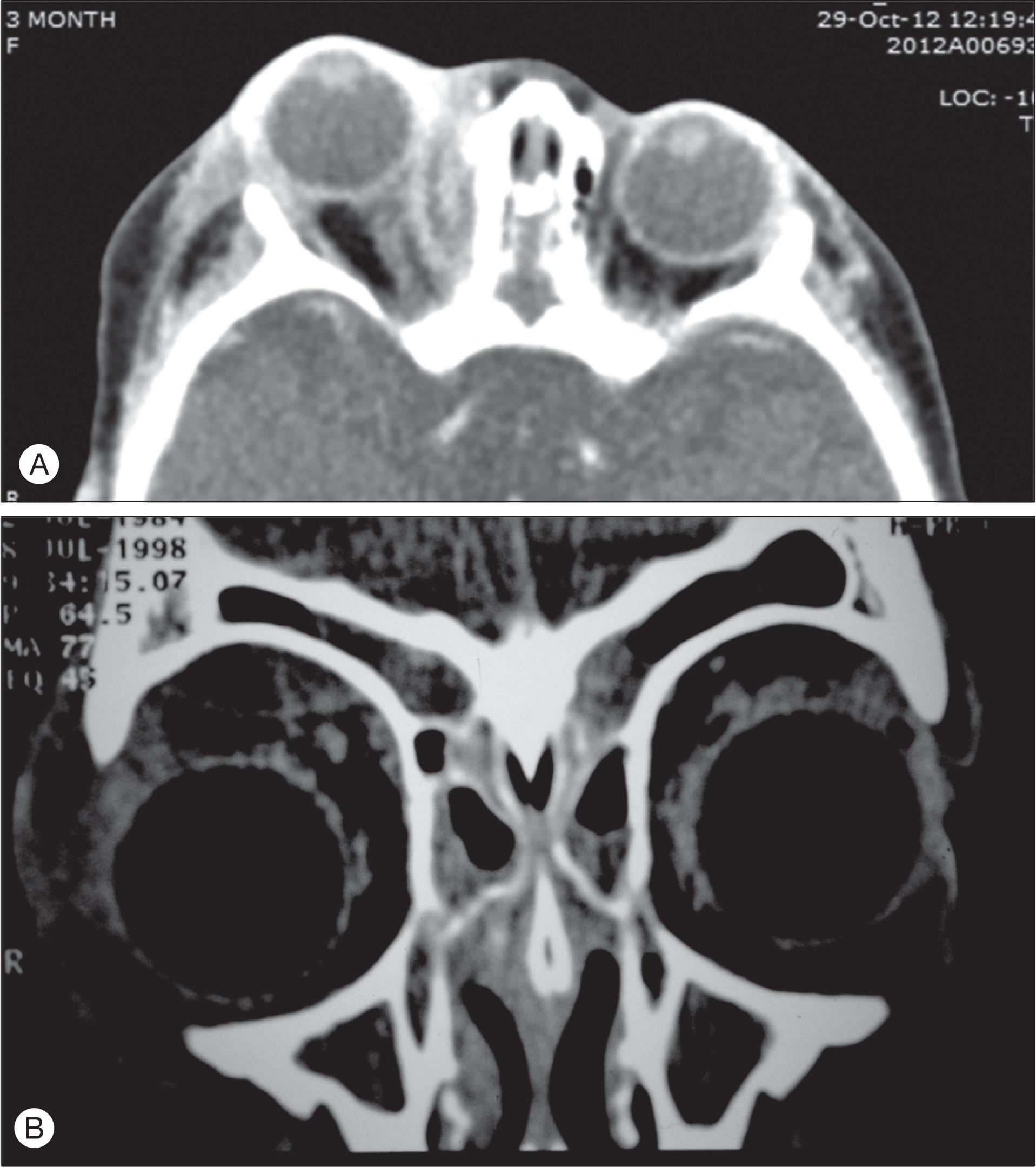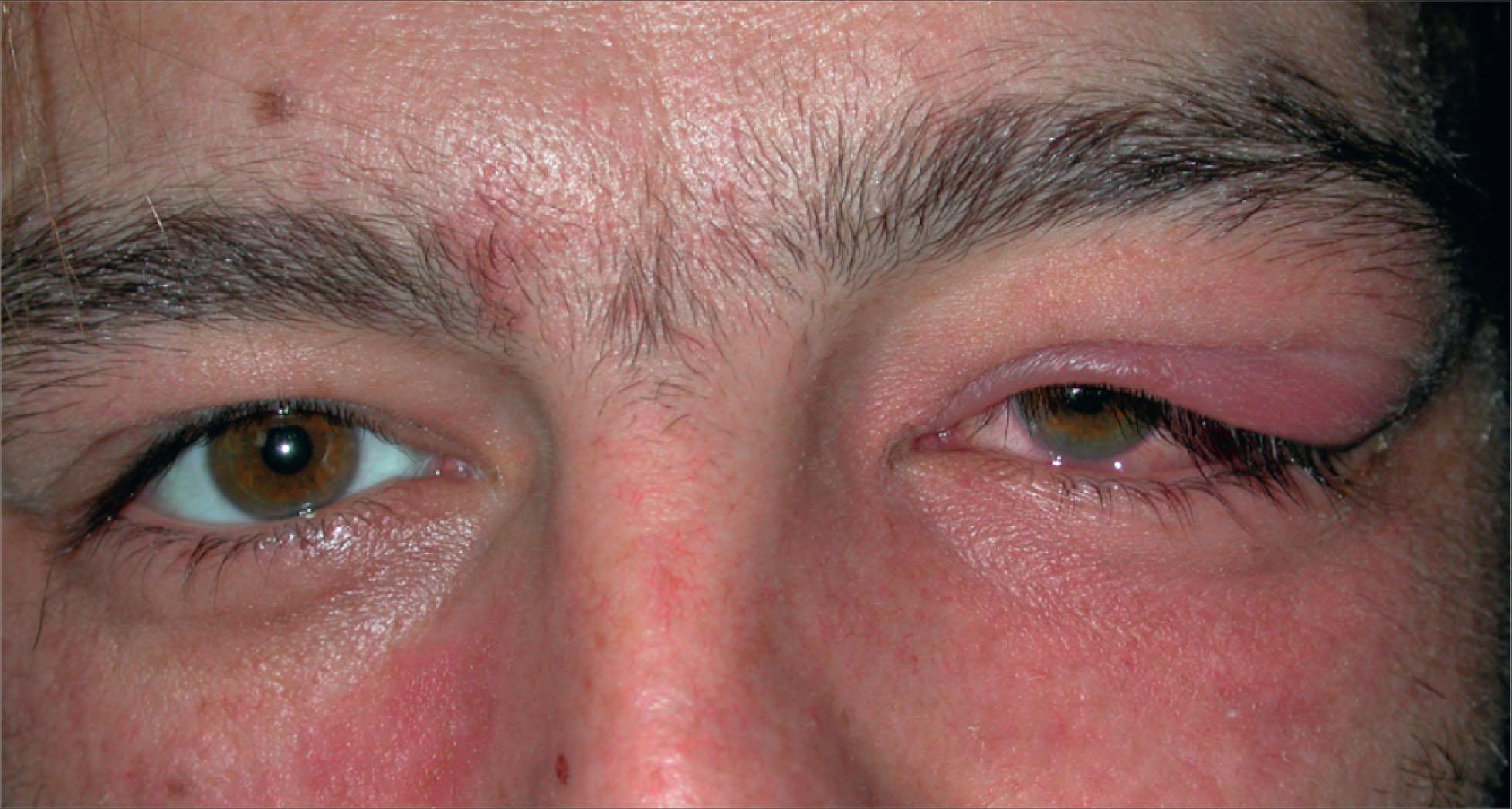Physical Address
304 North Cardinal St.
Dorchester Center, MA 02124
Inflammation or infection of the orbital contents.
Signs of inflammation include redness (eyelids and/or conjunctiva), swelling (proptosis, eyelid swelling, and conjunctival chemosis), pain (not always), and loss of function (reduced ocular motility, loss of vision).
Differentiating infection from noninfective inflammation and establishing the nature of any noninfectious inflammation are important.
Orbital infections and inflammations are relatively common. The commonest, Graves’ orbitopathy, is covered elsewhere.
Features of acute inflammation (redness, heat, pain, swelling, and loss of function) are seen in many of these conditions, but not all. Noninfectious orbital inflammations are often subacute or chronic without signs of inflammation.
An accurate and thorough clinical history, including a full general medical history, is vital, because orbital inflammations are often associated with systemic diseases. Examination of the eyes and orbits, the nasal cavity, regional lymph nodes, and salivary glands should be performed. First-line imaging is usually a computed tomography (CT) or magnetic resonance imaging scan.
For suspected bacterial orbital cellulitis, microbiological swabs should be taken. Pus from the ostia of infected sinuses or abscess cavities is best. Blood cultures are rarely positive.
Differentiating infectious and noninfectious orbital inflammation can be difficult, and a trial of antibiotics is reasonable. If no response occurs, investigate for a specific cause of inflammation. Blind treatment with corticosteroids will often cloud or delay the diagnosis. Blood tests may help establish a diagnosis (see Table 12.14.1 ). A biopsy should be obtained if possible. Many specific inflammations cannot otherwise be diagnosed. Exceptions include those with typical orbital myositis or orbital apical inflammation.
|
Orbital infection is usually bacterial (orbital cellulitis) and rarely viral, fungal, or parasitic (see Table 12.14.2 ).
|
Untreated orbital cellulitis can cause blindness and intracranial infection. Preseptal (eyelid) cellulitis should be differentiated from the more dangerous orbital cellulitis. Orbital cellulitis, in addition to signs of eyelid inflammation (redness and swelling), has signs of orbital inflammation—conjunctival redness and swelling (chemosis), proptosis, and potentially loss of function (visual loss and reduced eye motility) ( Fig. 12.14.1 ).

The usual source of infection in orbital cellulitis is paranasal sinusitis. Bacteria infection spread to the adjacent orbit and less commonly from the globe (panophthalmitis), eyelids, lacrimal sac, infected teeth, or orbital foreign bodies.
Abscess formation (in the subperiosteal [SPA] or within the orbital tissues) may occur, most commonly in the medial SPAs adjacent to the ethmoid sinuses ( Fig. 12.14.2A ).

Patients with orbital cellulitis should be admitted to the hospital for careful observation, including visual function, and immediate intravenous antibiotics. Antibiotic choice should be in consultation with infectious diseases experts. A common combination is ceftriaxone and flucloxacillin. Anaerobic cover may be required in older patients.
All patients should have an orbital and paranasal sinus CT scan. In children 9 years of age or younger, most medial SPAs are sterile and often small. If vision is normal, observation is acceptable, and most resolve without drainage. Surgical drainage is performed if the abscess is elsewhere ( Fig. 12.14.2B ), vision is compromised, the SPA is large, frontal sinusitis is present ( Fig. 12.14.2B ), or the abscess recurs after drainage.
Children over 15 years of age and adults develop more complex infections, with multiple organisms including anaerobes. Their SPAs or other abscesses should be drained. Between 9 and 15 years, a more active surgical role is often, but not always, required.
Antibiotic-resistant bacteria are now commoner in orbital infection. The commonest is methicillin-resistant Staphylococcus aureus (MRSA). MRSA orbital infection usually occurs without adjacent paranasal infection, abscesses are often multiple, and the lacrimal gland often is involved. However, the guidelines established for management of SPAs remain valid.
Bacterial dacryoadenitis is rare. Signs are maximal over the lacrimal gland ( Fig. 12.14.3 ). Pus may be seen coming from lacrimal ductules and should be swabbed. Infection may spill into the adjacent orbit. Abscesses can form and may require drainage.

Orbital tuberculosis is rare, especially in the West. It occurs in several forms: periostitis, soft tissue tuberculoma (cold abscess) sometimes with bony involvement, dacryoadenitis, or spread from paranasal sinuses. Diagnosis depends on biopsy demonstrating acid-fast bacilli and preferably a positive tissue culture.
The only significant orbital viral infection is herpes zoster ophthalmicus. An orbital apex syndrome can occur with multiple cranial nerve palsies and visual loss. Generalized orbital inflammation can occur.
Fungal orbital infections fall into two groups: acute, fulminant infection with Mucorales fungi (rhino-orbital-cerebral mucormycosis) and the more indolent invasive aspergillus infection.
Become a Clinical Tree membership for Full access and enjoy Unlimited articles
If you are a member. Log in here